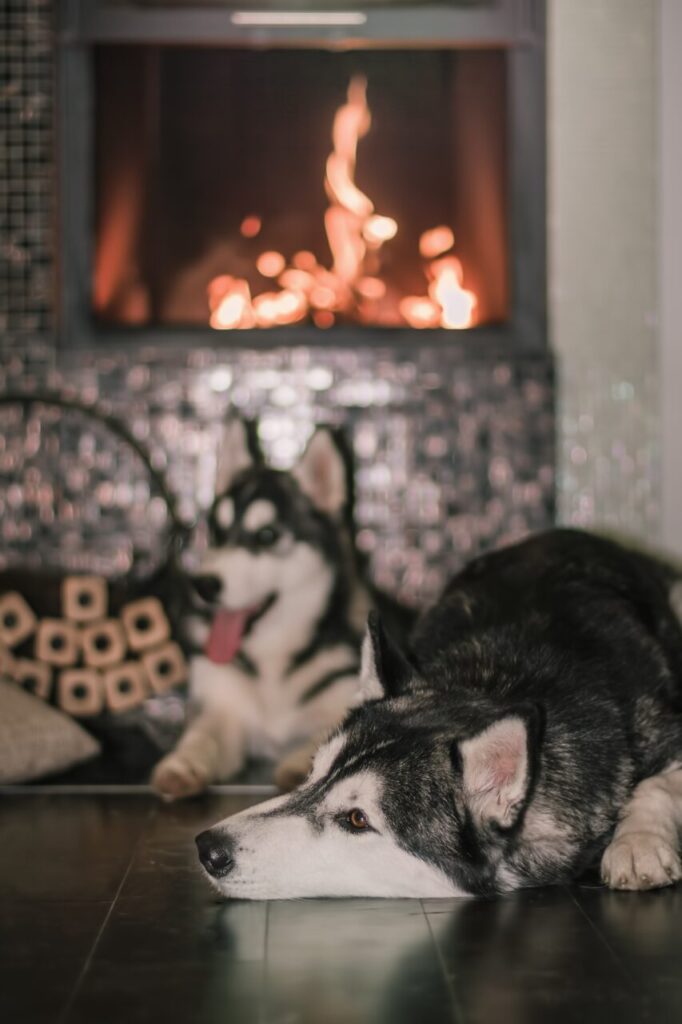As winter approaches and temperatures drop, many people swap out summer clothes for winter finery. Wool coats, fuzzy hats, and sturdy boots keep us warm when the wind howls and the snow drifts. Protecting your home when winter looms is just as important as layering on cold weather gear, and with energy costs on the rise, finding cost-effective (and environmentally friendly) solutions is more important than ever.
The good news? Many energy-efficient winter heating solutions are available that not only keep your home cozy but also save you money and reduce your carbon footprint.
1. Start with passive home design
If you’re starting with a new construction home, using passive home design is one of the best ways to build a cozy and cost-effective house.
In short, passive design is a construction concept that prioritizes energy efficiency, affordability, and comfort through deliberate design choices. An example would be orienting the house to take maximum advantage of the sun’s position in colder months — saving you money on heating.
But you don’t have to start from scratch to utilize passive design. Many of the following tips also follow the principles of passive home building but can easily apply to existing homes.
2. Improve insulation
One of the main principles of passive design is creating an adequately insulated “building envelope.” This includes every wall and the roof, where heat can escape through cracks as it rises.
Improving insulation, at least in attic spaces, is key to keeping the warm air in and the cold air out during the winter months. If you can access walls and floors, increasing your insulation’s R-value (a measurement of how well insulation can stop heat from passing through it) is relatively affordable.
Doing so also has measurable, immediate effects on one’s home heating bill. A homeowner can save up to 20% on overall energy costs with this simple change.
3. Add energy-efficient windows and doors
Part of the charm of an old house is its unique architectural details, but old or poorly insulated windows and doors can be a significant source of heat loss in a home. Upgrading to energy-efficient windows and doors with double or triple glazing, low-emissivity coatings, and proper sealing reduces heat loss and keeps your home comfortable. Just keep in mind that these sorts of home upgrades are on the higher end of the price scale.
4. Switch to programmable thermostats (and get smart)
No one likes to come home to a cold, dark house, but if you’re heating a home that no one is in, you’re throwing away money.
It doesn’t have to be this way. Installing a programmable thermostat is one of the simplest, most effective methods for improving your home’s energy efficiency. These allow you to set specific temperatures for different times — cooler when you’re not home or sleeping, and warmer in the morning and when you get home from work.
Another option is investing in smart thermostats that can be controlled from your device. These cost a bit more than a simple programmable thermostat but allow you more timely control over your heating (and cooling in the summer). Both options lead to substantial energy savings through reduced heating bills.
5. Choose high-efficiency heating systems
Don’t wait until you’re trying to sell your home to upgrade your heating system. Old, inefficient heating systems usually can’t make the most of their energy sources.
A modern furnace or heat pump can significantly reduce your energy consumption. Newer systems convert more of the energy they use into heat, making them more environmentally sustainable and cost-effective in the long run. Some even give you more control over which areas of your house get more or less heat. This is a bonus for families with rooms that rarely get used.
6. Warm up with radiant floor heating
If you’re considering installing new flooring, now’s the time to choose radiant floors for a warm experience from the ground up. Heating from radiant flooring generates no drafts and evenly distributes heat.
This type of heating is both luxurious and practical in bathrooms and kitchens where tile or stone flooring is standard. If the initial investment is too much to convert your entire house, consider starting in these rooms and adding the rest as you can.
7. Consider solar heating
If you live in parts of Alaska where the sun only makes a brief daily appearance from late fall to mid-spring, relying entirely on solar heating isn’t the best option. For everyone else, harnessing solar energy for heating is environmentally friendly and cost-effective in the long term.
Solar heating systems use sunlight to warm air or water, which can then be circulated through the house. This reduces the need for conventional heating methods and is utilized by many families who live off the grid.
The initial installation cost can be high, but there are many state and federal incentives for implementing this type of heating.
8. Don’t wait another winter
Unpredictable weather patterns can cause extreme snowfall and bitterly cold weather in much of the U.S. The longer you wait to make changes, the more risk you take on. It can be understandably daunting to make major improvements toward energy-efficient, cost-effective heating solutions. But taking one small step at a time can offer considerable benefits for years to come.
7 Common Sense Ways to Save on Your Home Heating Costs This Winter



2 Responses to “8 Energy-Efficient Winter Heating Solutions for a Cozy and Cost-Effective Home”